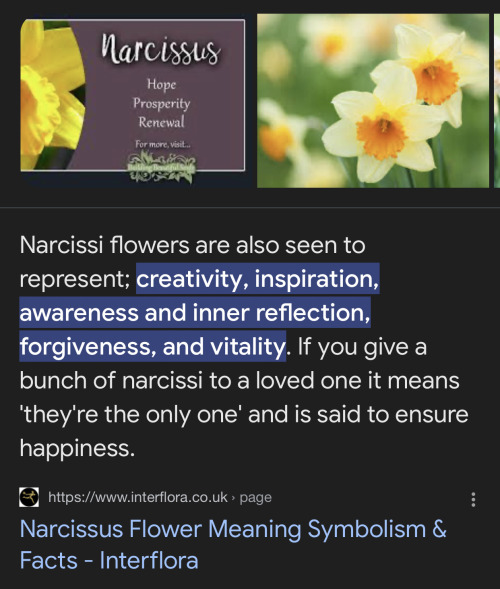
She was simple as quantum physics | https://linktr.ee/stemwithjooricanka
152 posts
Stemwithjooricanka - Stem With Joori Canka - Tumblr Blog
Aurora Timelapse Over Italian Alps
Video Credit & Copyright: Cristian Bigontina
Did you see last night's aurora? This question was relevant around much of the world a few days ago because a powerful auroral storm became visible unusually far from the Earth's poles. The cause was a giant X-class solar flare on Tuesday that launched energetic electrons and protons into the Solar System, connecting to the Earth via our planet's magnetic field. A red glow of these particles striking oxygen atoms high in Earth's atmosphere pervades the frame, while vertical streaks dance. The featured video shows a one-hour timelapse as seen from Cortina d'Ampezzo over Alps Mountain peaks in northern Italy. Stars from our Milky Way Galaxy dot the background while streaks from airplanes and satellites punctuate the foreground. The high recent activity of our Sun is likely to continue to produce picturesque auroras over Earth during the next year or so.
🔗Discuss | ℹ️About APOD

2024 October 11
Ring of Fire over Easter Island
Image Credit & Copyright: Yuri Beletsky (Carnegie Las Campanas Observatory, TWAN)
The second solar eclipse of 2024 began in the Pacific. On October 2nd the Moon's shadow swept from west to east, with an annular eclipse visible along a narrow antumbral shadow path tracking mostly over ocean, making its only major landfall near the southern tip of South America, and then ending in the southern Atlantic. The dramatic total annular eclipse phase is known to some as a ring of fire. Also tracking across islands in the southern Pacific, the Moon's antumbral shadow grazed Easter Island allowing denizens to follow all phases of the annular eclipse. Framed by palm tree leaves this clear island view is a stack of two images, one taken with and one taken without a solar filter near the moment of the maximum annular phase. The New Moon's silhouette appears just off center, though still engulfed by the bright disk of the active Sun.
🔗Discuss | ℹ️About APOD
🎞High Resolution

67 years ago, Laika was launched into space.
Laika, ′′Little Barker" but her real name was Kudrjavka, Russian for ′′curly." She was captured on the street, in Moscow.
Half Husky and half Terrier, she was around 3 years old at the time. She was chosen because she was calm, docile and perfectly adaptable to the Sputnik 2 capsule. Equipped for life support (food and water), the mission didn't involve return. For Laika, it was a death sentence.
The interior of the satellite was lined and the interior space was wide enough to allow Laika to lie or stand. The internal temperature was set to 15. and a refrigeration system had to protect the animal from excessive thermal surges.
On November 3rd at 2 AM, Sputnik 2 was launched into space. Laika probably survived for seven hours.
But some sources claim that agony was much longer: four days.
Alone, in space.
The satellite returned to atmosphere 5 months later, April 14, 1958, after turning 2.570 laps around Earth.
It disintegrated upon return to the atmosphere.
Every year, before Fall, I feel compelled to tell this story and possibly do it with new words. There's a deep guilt that all of us should feel reading what we did to Laika. Human progress has often been achieved at the expense of animals that had nothing to do with our desire for supremacy.
Many people believe this was an acceptable price for our conquests, but it seems obvious, even reading this story, that was really just a trivial form of prevarication.
We had a duty to choose another path.
We still have that duty today.
Sorry humanity has failed you, Laika 💔

Simple as that!
This Russian astronaut will rescue NASA's Sunita Williams from ISS: Meet Aleksandr Vladimirovich Gorbunov

Student Experiments Soar!
Have you ever wondered what it takes to get a technology ready for space? The NASA TechRise Student Challenge gives middle and high school students a chance to do just that – team up with their classmates to design an original science or technology project and bring that idea to life as a payload on a suborbital vehicle.
Since March 2021, with the help of teachers and technical advisors, students across the country have dreamed up experiments with the potential to impact space exploration and collect data about our planet.
So far, more than 180 TechRise experiments have flown on suborbital vehicles that expose them to the conditions of space. Flight testing is a big step along the path of space technology development and scientific discovery.
The 2023-2024 TechRise Challenge flight tests took place this summer, with 60 student teams selected to fly their experiments on one of two commercial suborbital flight platforms: a high-altitude balloon operated by World View, or the Xodiac rocket-powered lander operated by Astrobotic. Xodiac flew over the company’s Lunar Surface Proving Ground — a test field designed to simulate the Moon’s surface — in Mojave, California, while World View’s high-altitude balloon launched out of Page, Arizona.


Here are four innovative TechRise experiments built by students and tested aboard NASA-supported flights this summer:

1. Oobleck Reaches the Skies
Oobleck, which gets its name from Dr. Seuss, is a mixture of cornstarch and water that behaves as both a liquid and a solid. Inspired by in-class science experiments, high school students at Colegio Otoqui in Bayomón, Puerto Rico, tested how Oobleck’s properties at 80,000 feet aboard a high-altitude balloon are different from those on Earth’s surface. Using sensors and the organic elements to create Oobleck, students aimed to collect data on the fluid under different conditions to determine if it could be used as a system for impact absorption.

2. Terrestrial Magnetic Field
Middle school students at Phillips Academy International Baccalaureate School in Birmingham, Alabama, tested the Earth’s magnetic field strength during the ascent, float, and descent of the high-altitude balloon. The team hypothesized the magnetic field strength decreases as the distance from Earth’s surface increases.

3. Rocket Lander Flame Experiment
To understand the impact of dust, rocks, and other materials kicked up by a rocket plume when landing on the Moon, middle school students at Cliff Valley School in Atlanta, Georgia, tested the vibrations of the Xodiac rocket-powered lander using CO2 and vibration sensors. The team also used infrared (thermal) and visual light cameras to attempt to detect the hazards produced by the rocket plume on the simulated lunar surface, which is important to ensure a safe landing.

4. Rocket Navigation
Middle and high school students at Tiospaye Topa School in LaPlant, South Dakota, developed an experiment to track motion data with the help of a GPS tracker and magnetic radar. Using data from the rocket-powered lander flight, the team will create a map of the flight path as well as the magnetic field of the terrain. The students plan to use their map to explore developing their own rocket navigation system.
The 2024-2025 TechRise Challenge is now accepting proposals for technology and science to be tested on a high-altitude balloon! Not only does TechRise offer hands-on experience in a live testing scenario, but it also provides an opportunity to learn about teamwork, project management, and other real-world skills.
“The TechRise Challenge was a truly remarkable journey for our team,” said Roshni Ismail, the team lead and educator at Cliff Valley School. “Watching them transform through the discovery of new skills, problem-solving together while being driven by the chance of flying their creation on a [rocket-powered lander] with NASA has been exhilarating. They challenged themselves to learn through trial and error and worked long hours to overcome every obstacle. We are very grateful for this opportunity.”
Are you ready to bring your experiment design to the launchpad? If you are a sixth to 12th grade student, you can make a team under the guidance of an educator and submit your experiment ideas by November 1. Get ready to create!

Make sure to follow us on Tumblr for your regular dose of space!

Narcissa is also a flower and this is the meaning behind the flower & name




